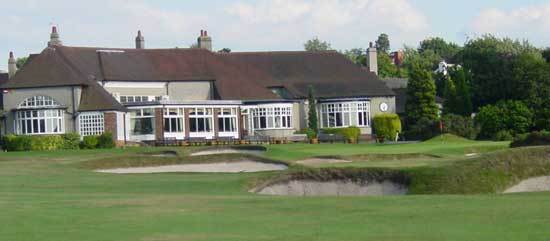Moortown - steeped in history
Leeds course has great claims to fame

You'd no doubt score valuable points in a pub quiz of sporting trivia if you knew where the other Ryder Cup donated by Samuel Ryder, is kept and played for annually. While the original - first donated in 1927 to celebrate the first match between the professionals of the US and Great Britain and Ireland in Worcester, Massachusetts - is kept under tight security by the holders (currently the US), the other, bearing the donor's name, can usually be found in the modest surroundings of Moortown Golf Club, near Leeds. Because it was here the return series of matches were played in 1929 and to mark the efforts of the Moortown lady members - and no doubt the male members' WAGS (wives and girlfriends) - Samuel Ryder presented them with a trophy of their own for which the ladies still compete every year. It was the staging of the Ryder Cup, for the first time in the UK, in 1929 which, has contributed so much to Moortown's reputation as a championship course. At a meeting that year, Kolin Robertson explained how he had successfully pitched for the event to be played at Moortown and a sub-committee was set up to deal with its organisation. Months were spent in bringing the course - designed by Dr Alister MacKenzie in 1909 - up to first-class condition which was achieved despite challenging weather conditions “The course was in perfect condition and the greens beautiful”, E M Cockell wrote Golf Illustrated in May, 1929, " and unusually at this time of year, played fast with the par of 70 often broken by the players." Ever since, Moortown has always held a richly deserved reputation as one of the country's finest courses - tough but fair, with a blend of perfect moorland turf, immaculate greens and natural hazards of gorse, heather, woodland and streams. | |
Originally before MacKenzie weaved his magic, the Black Moor area of Leeds was a heathery, boggy hill-side, full of stagnant pools running north to farmland known as Alwoodley Moss. To reach it required a journey on public transport to Street Lane corner, and then a walk of over a mile, generally uphill and over rough ground. Dr MacKenzie, who also designed nearby Alwoodley, often chaired many of the early meetings, was elected captain in 1913 and as the club leased more land, holes were extended and re-shaped. The present clubhouse was opened in 1915 and today the course is highly rated within Yorkshire despite many rivals. From the opening par-5 there are many fine holes, including the new 6th, rated the most difficult. Signature holes include the 220-yard 8th, where Al Espinosa, a member of the American Ryder Cup side holed in one in 1929, and the 10th (Gibraltar) a par-3 par-3 with a sloping plateau green. Typical of all great courses there's a classic finish. With the 18th fairway favouring strategically placed bunkers. it needs two exceptional shots to find the well-guarded green which nestles under the Clubhouse windows. Many famous shots have been played to the closing hole, including Severiano Ballesteros managing to fly a 9-iron approach clean over the green to the practice putting surface! However, the most historic shot was that of Nigel Denham during the English stroke-play championship. His approach shot missed the green and bounced through an open clubhouse window. His ball settled on the carpet and he was allowed to play his recovery shot back onto the green! The clubhouse has since been deemed out of bounds. To discover more of Moortown’s fascinating history, visit www.moortowngolfclub.co.uk . Tell us on the forum if you've played Moortown. You can review the course |



